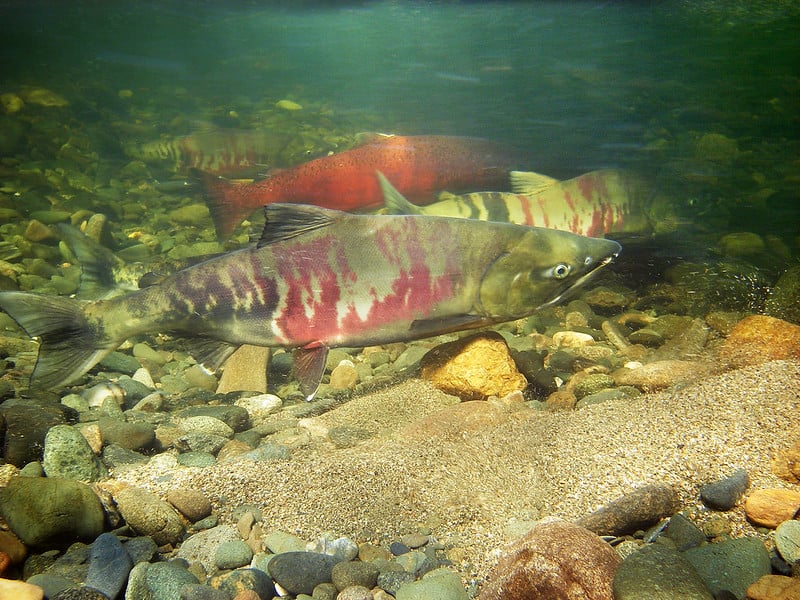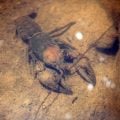Warming Arctic Opens New Salmon Habitat

Photo: Bureau of Land Management Alaska/Flickr
New research from the University of Alaska Fairbanks shows that recent warm ocean temperatures have spurred higher Pacific salmon abundance in the Canadian Arctic. According to the report, “salmon haven’t historically been seen in large numbers in the Arctic Ocean and its watersheds, but in recent years incidental catches by subsistence fishermen have occasionally surged.”
What the university researchers found in particular is that since 2000, a two-part formula determines whether salmon “turn the corner” around the northern part of Alaska and head for Arctic waters, continuing all the way to the Canadian Arctic.
First, the fish need warm conditions in late spring in the Chukchi Sea, which is northwest of Alaska. If those waters are warm enough, salmon will head there for food. Then, if those warm conditions persist into the summer in the Beaufort Sea, northeast of Alaska, the salmon will “turn the corner” all the way to the Canadian Arctic.
“You need both gates to be open, which is fascinating in itself,” said Curry Cunningham, an associate professor at UAF’s College of Fisheries and Ocean Sciences, in an article for Phys.org. “If they don’t align in terms of having open, ice-free water, salmon don’t turn that corner.”
Chum and sockeye salmon are the most likely to make the switch to swimming in Arctic waters, according to the researchers. Both those species of salmon are more tolerant of cold water, which means they can easily expand into new habitat.
While this may seem like a good thing on the surface—more salmon fisheries can’t be a bad thing, right? – there are some concerns over this expansion.
Some of the researches question the impact salmon in the Arctic will have on biodiversity in the local streams, where salmon haven’t historically been present.
Indigenous fishermen also have questions about using the salmon for subsistence living.
One Indigenous fishermen quoted in the study, Frankie Dillon, saw his first salmon around 2010. He said when he saw it in the net, he had no clue what he was looking at. Dillon was on the Big Fish River in the northern Yukon, tagging Dolly Varden, when he found a chum salmon in his nets.
“I had to ask, ‘What kind of fish was that?'” Dillon said in the Phys.org article. “It’s the first time I’d seen it in my life. I’d only seen them on TV before.”
Researchers will need to conduct more studies on the impact salmon may have on Arctic biodiversity, as the University of Alaska Fairbanks scientists predict salmon will be common in the Canadian Arctic by the 2040s.
Trout Develop Distinct Genes in Mine-Polluted Rivers
Alaska's Orange Rivers











